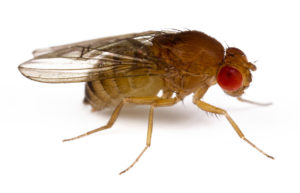Drosophila learning device

An experimental apparatus which is used to train and evaluate learning experience of fruit flies using exposure to odours and other stimuli.
The technology can analyse each fly individually in 20 separate chambers. It offers monitoring of each fly’s behaviour, which allows for action-contingent (operant) conditioning protocols, and for both trained and control groups to be included in a single experiment. Automated stimulus control facilitates greater standardisation of protocols and allows fewer operators to collect more data than with previous methods.
Additional applications of the technology include analysis of decision-making, walking speed, activity bouts, motor responses to painful shock and other behavioural metrics.
The training device is market ready and will be of interest to companies involved in discovery of drug treatments for human anxiety disorders and improvements to cognitive functions, as an alternative to traditional screening platforms.
Drug discovery
A fly’s reaction to chemical signals and most odours is neither innate nor invariant but influenced by experience.
Technology developed and engineered in Oxford uses similarities between fruit fly and human learning behaviours to screen for compounds that improve learning and memory in humans.
The 1FLY system is an experimental apparatus developed by researchers at the University of Oxford, which is used to train and evaluate learning experience of fruit flies using exposure to odours and other stimuli.
Flexible and functional training
The technology is distinguished from existing olfactory training systems by analysing each fly individually in 20 separate chambers. It offers individual monitoring of each fly’s behaviour, which allows for action-contingent (operant) conditioning protocols, and for both trained and control groups to be included in a single experiment. Automated stimulus control facilitates greater standardisation of protocols and allows fewer operators to collect more data than with previous methods.
Quantitative data is obtained from the fully automated experimental system, in which all variables and stimuli are readily accessed from the software interface, including:
-
airflow
-
odour concentration
-
stimulation voltage
-
training pulses
-
evaluations periods
-
rest periods
-
time of training
Analysis of cognitive function
Additional applications of the technology include analysis of decision-making, walking speed, activity bouts, motor responses to painful shock and other behavioural metrics.
These can either be assayed in separate experiments or simultaneously during learning experiments.
Mature technology
The training device is market ready and will be of interest to companies involved in discovery of drug treatments for human anxiety disorders and improvements to cognitive functions, as an alternative to traditional screening platforms.
Data derived from the technology and a full description of the automated device was published in ‘Writing memories with light- addressable reinforcement circuitry’ in 2009.
Please see our online software store for more information https://process.innovation.ox.ac.uk/software/p/7851/analysing-neurobiology-of-learning-and-memory/1
about this technology

